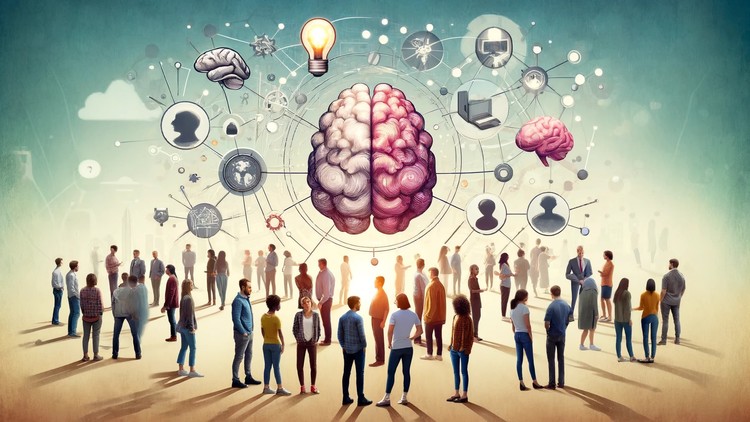
Exploring Human Behavior and Interaction: Insights into Social Influence, Group Dynamics, Identity, and Perception
What you will learn
Comprehend the Fundamentals of Social Psychology: Students will gain a solid understanding of the basic principles and theories in social psychology
Learners will delve into how social perception, attitudes, persuasion, and group dynamics shape interactions.
Students will explore concepts like social identity theory, self-concept, and the impact of cultural, gender, and societal factors on identity.
This Course includes understanding phenomena such as stereotyping, prejudice, discrimination, and their implications on social justice and intergroup relations.
Description
Embark on an enlightening journey into ‘Social Psychology and Social Behaviors’, a comprehensive course where the fascinating spheres of sociology and social psychology converge. This detailed program is meticulously crafted to explore how individual behaviors, societal influences, and group dynamics intricately interact to mold human experiences. Here’s what makes this course an indispensable addition to your learning journey:
- Deep-Dive into Core Principles: Unpack the fundamental concepts of social psychology, illuminated through a sociological lens. Grasp how societal norms, cultural backgrounds, and interpersonal relationships profoundly shape our thoughts, emotions, and behaviors.
- Explore the Dynamics of Social Interaction: Engage with the complexities of social influence, persuasion, and group dynamics. Understand how these forces operate in various contexts, from workplaces to social communities, providing a nuanced perspective on human interaction.
- Critical Examination of Social Constructs: Investigate key societal issues like stereotyping, prejudice, and discrimination through the lens of social psychology. This exploration is not just theoretical; it’s a crucial lens to view and address real-world societal challenges.
- Practical Application and Real-World Relevance: Each module connects theory with practical scenarios, helping you apply sociological and psychological concepts to everyday life and professional environments.
- Interactive Learning Experience: With a blend of case studies, interactive discussions, and reflective exercises, the course promises an engaging and immersive learning environment.
This course is not just an academic endeavor; it’s a transformative experience. It’s tailored for:
- Psychology and Sociology Students: Perfect for those seeking a profound understanding of human social behavior.
- Professionals in Human-Centric Careers: Ideal for individuals in fields like HR, marketing, and counseling, where understanding social dynamics is key.
- Advocates and Social Workers: Invaluable for those who deal with societal issues and strive for change.
- Lifelong Learners and Curious Minds: A treasure trove of knowledge for anyone fascinated by the social aspects of human nature.
In this course, you’re not just learning about social psychology and sociology; you’re gaining tools to better understand the world and your place in it. Embark on this journey to enhance your comprehension of social dynamics and enrich your personal and professional life.
Content